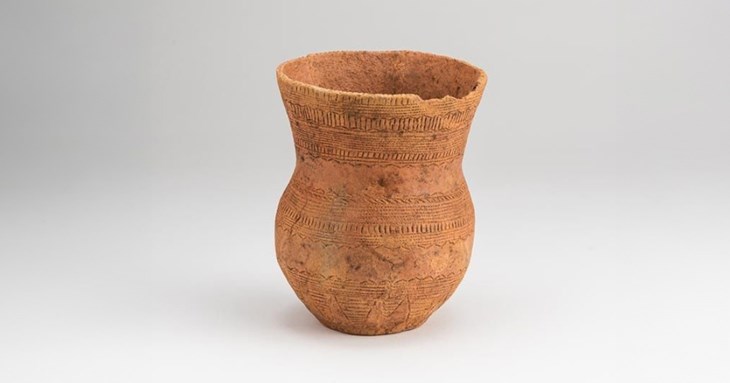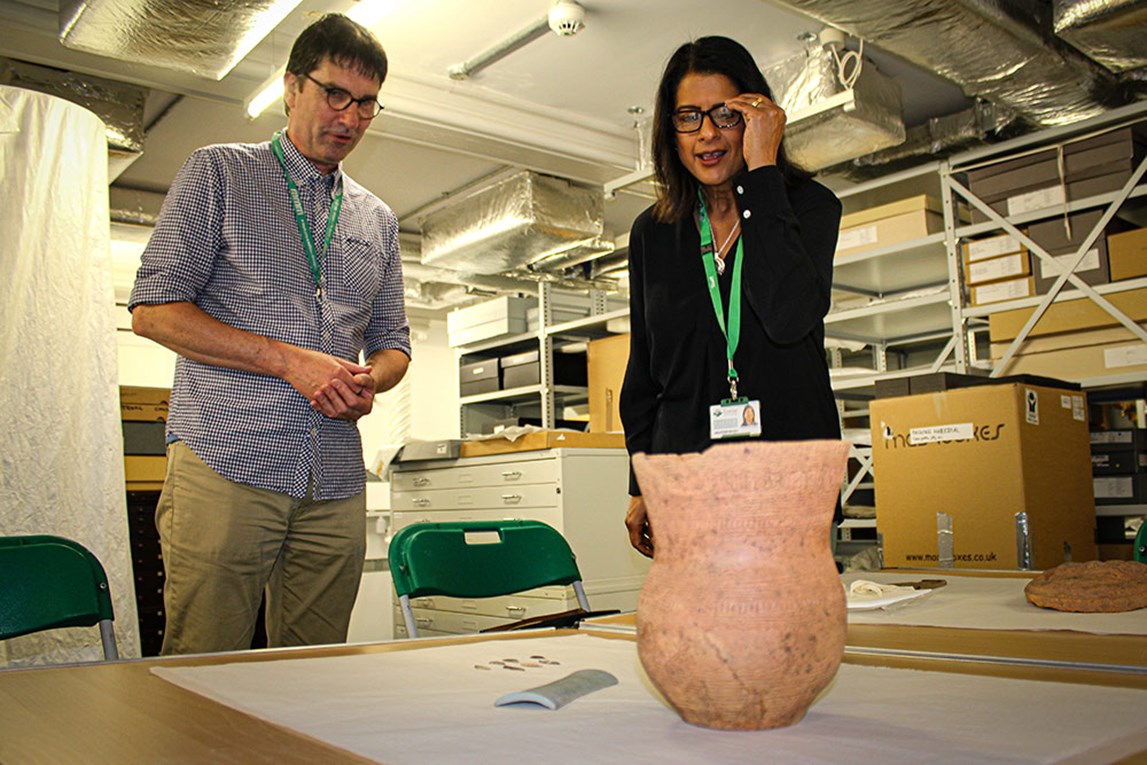Clay beaker found just outside Exeter dates back to 2,300 BC
Published: 13 September 2023

A 4,300-year-old clay beaker unearthed by archaeologists working on the site of a new school is being cared for at Exeter’s Royal Albert Memorial Museum and Art Gallery.
The earthen-ware beaker was discovered by workers preparing the foundations for the construction of the Cranbrook School just outside Exeter in 2011 and dates back to 2,300 BC, the early bronze age.
In 2021 the beaker came into possession of the Royal Albert Memorial Museum and Art Gallery (RAMM) and was recently viewed by City Council Chief Executive Bindu Arjoon, whilst she was meeting staff at the Council-run museum.

Last year it went on display but is now in storage at the RAMM. However it can be viewed on request or online at https://bit.ly/3LlM29i
Curator Tom Cadbury is delighted RAMM now has the beaker. He said: “While many beakers were used for food and drink they are also often found with burials. This was the case with the Cranbrook beaker. An extraordinary archer’s bracer – a type of sleeve to protect archer’s from whiplash from the drawstring - was also found with the burial. The bracer was made from stone quarried high up in the Cumbrian mountains.”
The Cranbrook beaker is only the fourth to be found complete with a burial in Devon, the other three finds were made in the 19th century. It is decorated all over with a comb-stamped pattern and is the first beaker of this type to be found in Devon. It is also the first Beaker in Devon or Cornwall to be found in association with a bracer.
Tom said the burial place appears to have had enormous significance to the ancient community at Cranbrook. “For thousands of years that spot had been venerated as a special place. The origins of this veneration seem to date back to a large tree growing on the site around 10,000 years ago.
“The tree survived for thousands of years and the archaeologists found deposits of flint tools at its base. In the Bronze Age the tree was succeeded by, or possibly replaced by, a dug shaft with the beaker burial at the bottom. A ring ditch was also dug around the burial site,” he added.
Cllr Laura Wright, Deputy Leader and the Lead Councillor with responsibility for culture, said: “It’s fascinating to think that a clay pot dating back more than 4,300 years was just below the surface of a field just outside Exeter. If it hadn’t been for the building of the school it would never have been found.”
Chief Executive, Bindu Arjoon, said: “This is a remarkable story and I’m so pleased that the beaker is now being cared for by our own staff at RAMM. It will educate people for generations to come about the fascinating history of the area.”
